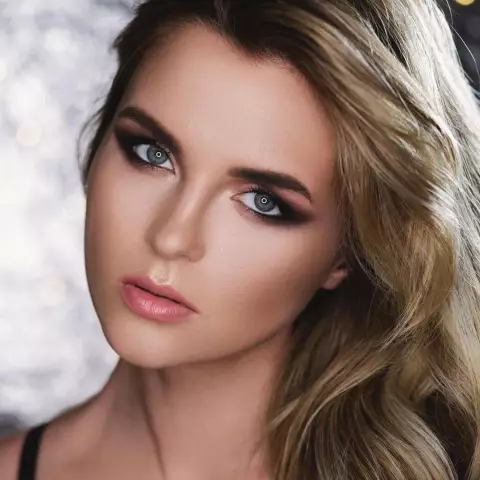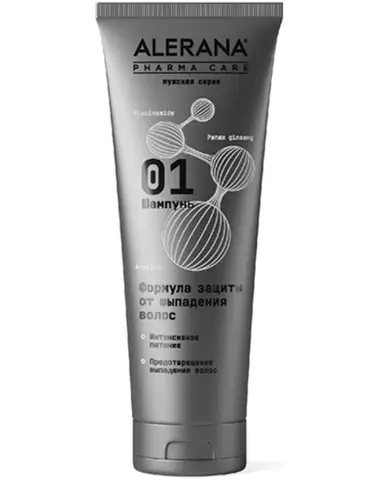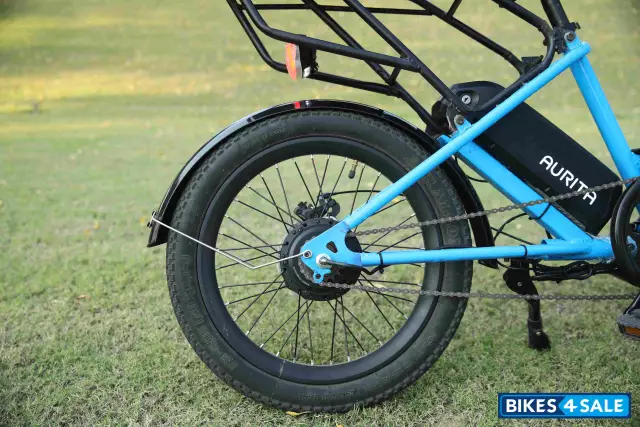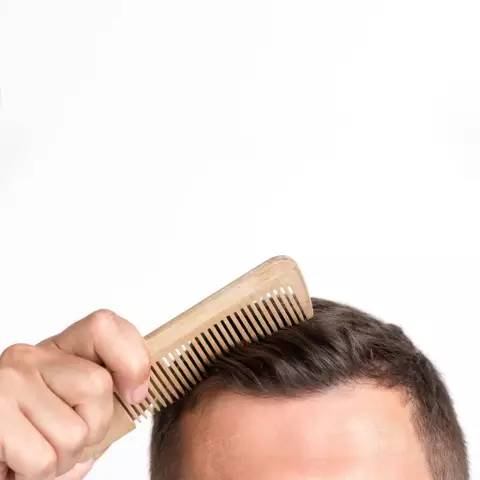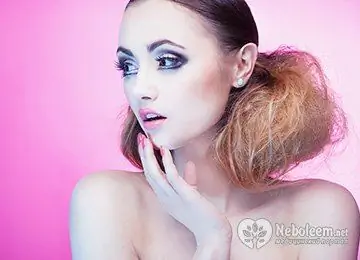- Author Rachel Wainwright [email protected].
- Public 2023-12-15 07:39.
- Last modified 2025-11-02 20:14.
Hair extensions - beauty pitfalls
What woman doesn't dream of beautiful and thick hair? While doctors were developing complex hair transplant schemes, a sensation occurred in the hairdressing industry several years ago - the use of hair extension techniques began.

Source: depositphotos.com
It would seem that dreams have come true: although the extension procedure does not belong to the category of cheap ones, almost any woman can noticeably increase the volume of her hair, change its length and color - in general, become a real beauty queen.
But after the rave reviews, after a while, the first negative ones appeared: women complained that after removing their hair extensions, they almost lost their own, that it took a lot of time and money to treat damaged hair. Is it safe to extend hair? Or is it better to forget about this opportunity and be content with what nature has given us?
Extension types
First you need to figure out exactly how hair extension occurs. According to technology, it is divided into hot and cold, but in either case, strands of other people's hair are attached to their own, and microcapsules, similar to balls, are formed at the junction.
Hot building according to English technology is a method when the strands are attached only with heated keratin or wax. Italian technology also implies the use of special metal clamps, which are preheated to the desired temperature. (The latest trend is ultrasonic extension: clips are melted by ultrasonic waves.) English technology seems to be more gentle - there is no metal in the hair. However, the strength of the hair attached in this way is not too great: it can be accidentally combed out. So in terms of reliability, the Italian way wins.
Cold hair extension is also done in several ways:
- using a special tape on which the hair is distributed. It is fixed at the roots of its own hair with glue. This is the fastest and most budgetary way of building up today;
- hair is glued to its own with a special glue. This procedure is more suitable for blondes, since the glue has a light shade;
- strands of hair are attached to their own with tiny metal clips that match the color of the hair.
So, any of the available technologies involves at least the use of foreign objects (capsules and tapes), as a maximum - more glue and heat treatment.
How to choose hair extensions?
This is the next, but no less important question. What's the use of extensions if the "non-native" hair looks unnatural? For extension, only natural human hair is used, in no case artificial. Someone else's hair must match the structure of your own, otherwise the difference will be obvious. And it's not about color - hair extensions can be dyed or, conversely, create a coloring effect.
Before the sale, the hair undergoes disinfection and special treatment, and an unpleasant surprise awaits inexperienced buyers. The hair is sanded and covered with silicone, it looks extremely attractive, but literally after two or three washes, the structure of such hair changes beyond recognition.
There are three types of hair extensions on sale: Asian, European and Slavic.
Asian ones are usually shipped from China and Korea. They are the cheapest, but after washing, they easily get tangled, stand on end and are very difficult to comb. (Now imagine that all this is happening on your head …)
The so-called European hair can actually come from India or Latin America and is also not very high quality. However, if a woman has her own hard and dense hair, you can use European strands for extension.
Slavic hair type is best suited for extensions: during pre-treatment, they retain a scaly layer and are never treated with silicone. Such hair lends itself well to styling, blow-drying, flattening with an iron. But they also cost much more than the two previous options.
By saving money on cheap hair, you run a considerable risk: taking care of your hair extensions can become a real torture.

Source: depositphotos.com
How to care for your hair?
It is better to know all about this in advance. To obtain a beautiful head of hair, three components are needed: high-quality hair, an experienced master and proper care.
Almost all types of build-up ban such a familiar pleasure as visiting a bath or sauna: at elevated temperatures, the glue melts. The same happens when using hot air in a hairdryer - in order to avoid melting keratin, a mode of warm or cold air is needed.
It is recommended to wash hair extensions only in an upright position - if you lower your head, your hair will easily get tangled. When applying the balm, care must be taken so that it does not fall on the capsules. By the way, about shampooing. It is not recommended to do this every day, and you need to massage the scalp very carefully so as not to damage the hair attachment points.
Forget that once you could let your hair dry and then comb it out quickly. It will not work quickly, and in addition, you will have to purchase a special natural bristle brush, without balls at the end, otherwise your hair volume will significantly decrease. After gentle washing, you should gently blot each strand with a towel (you cannot wind it over your head - the hair will get tangled), and then gently dry and comb your slightly dried hair.
At night, hair extensions must be collected in a pigtail or ponytail.
The most important thing is the timely correction of hair extensions. Do not assume that you can go with them for six months. In fact, the correction may be required after a couple of months - depending on the rate of growth of your own hair. The correction procedure consists in the fact that hair extensions are removed and reattached closer to the roots. True, it costs a little less.
To be or not to be build-up?
Each woman must decide this question for herself. It is strongly discouraged to extend hair for any scalp problems. Brittle and thin hair will not withstand the mass of hair extensions. This procedure is not recommended for women suffering from migraines or vegetative-vascular dystonia.
In any case, you should think carefully: does the risk of losing your own hair exceed the pleasure of a short-term beautiful hairstyle?
YouTube video related to the article:

Maria Kulkes Medical journalist About the author
Education: First Moscow State Medical University named after I. M. Sechenov, specialty "General Medicine".
Found a mistake in the text? Select it and press Ctrl + Enter.

